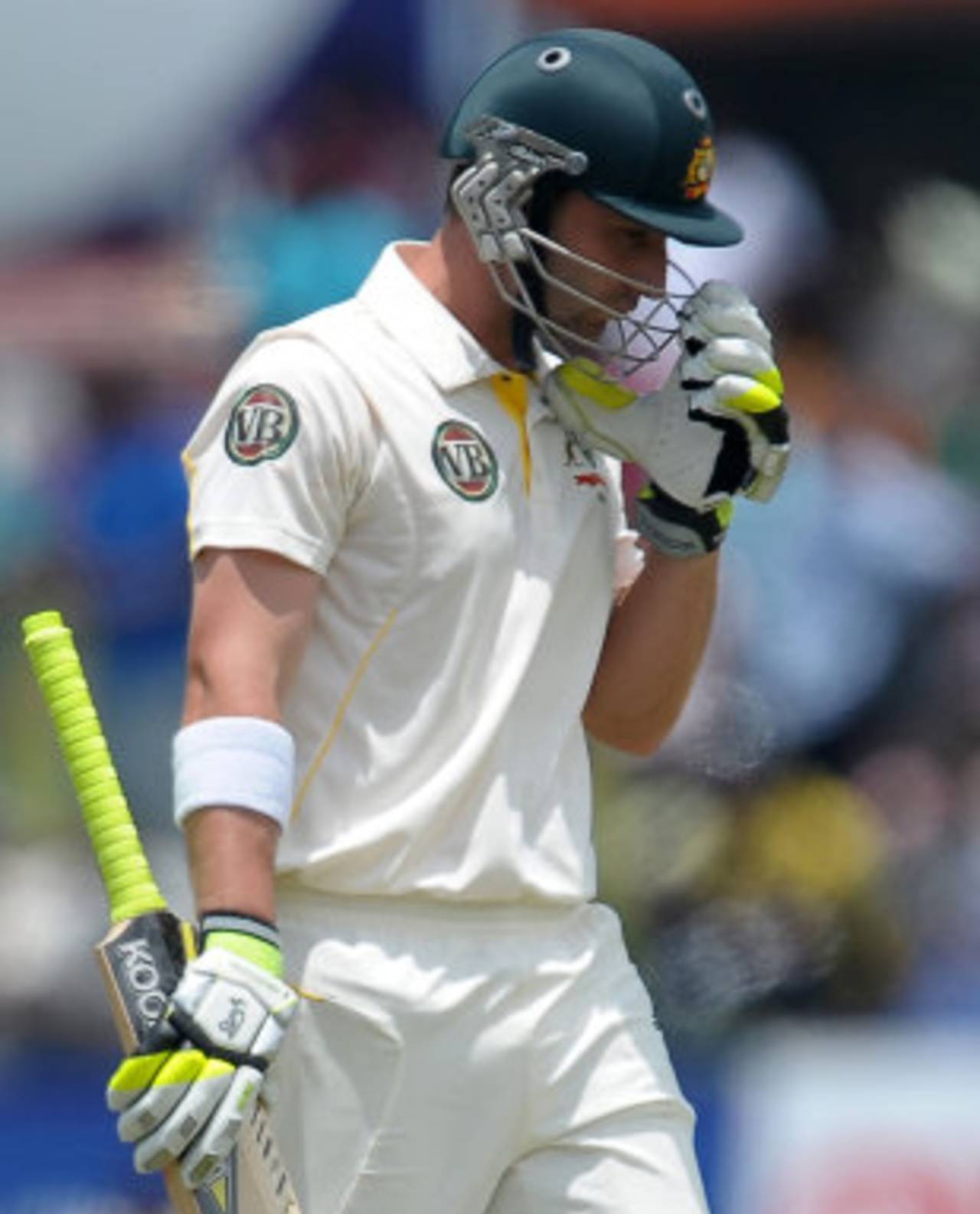Simon Taufel, the senior international umpire, has referred
Phil Hughes' second innings lbw dismissal in the
first Test between Sri Lanka and Australia to the ICC as a serious question mark against the accuracy of Hawk-Eye, the ball tracking technology. Taufel and the officiating umpires Richard Kettleborough, Aleem Dar and Tony Hill have have also sent the relevant footage of the incident to the ICC's cricket operations department.
Hughes was given out lbw on the second evening when he attempted to sweep Tillakaratne Dilshan. Replays indicated that the delivery had spun appreciably from around middle stump towards off, but the Hawk-Eye predicted path had the ball going straight on with the angle from round the wicket to to strike leg stump.
Though he reviewed the decision, Hughes was sent on his way by umpire Kettleborough after consultation with third umpire Hill who is obliged to grant significant weight to the original decision made on the field when he decides whether to reprieve or dismiss a batsman.
In Galle to conduct a third umpire accreditation seminar, Taufel has observed the first two days of the Test in part to assess the impact of technology's inconsistent use and accuracy, having umpired in England's home series against India under vastly different playing conditions and technological aids.
Taufel told ESPNcricinfo that more needed to be done to prove the veracity of devices such as Hawk-Eye, HotSpot and Virtual Eye via independent testing that sits outside the views of broadcasters and suppliers.
"Why can't we tap into technology if the match official is missing a piece of information, and is it right that the match official has to make a decision before technology can be used?" Taufel said. "That's a fundamental question I think we're still working through. Under the current system we're encouraged to make decisions and if a player feels they disagree with that then they've got the right to review. But if they get that wrong twice, then we can't use technology anymore in that innings for that particular team.
"They're the parameters we're working with and that's the value we want to promote within the sport - do we just want to get the obvious mistake fixed up or do we want to get as many decisions right as possible? What are the technology tools we have to achieve that, and then how accurate are those tools? Have we really investigated that from an independent perspective, and have we got a categorical answer with that? Is it reliable on the day, rather than just relying on the provider of that technology to say 'it is x-amount accurate and the result is right' and we just take that on face value?"
The third umpire's job in particular has become increasingly difficult as each series brings a different set of parameters for reviewing decisions, and the technological means by which they may be reviewed. Taufel said players had also become confused on the field by the transient nature of rules relating to referrals and technology.
"From the training perspective we did with the third umpire accreditation module it is very difficult, because there is no consistency of inputs," Taufel said. "How do I train and develop a third umpire when I don't know what technology tools are going to be available on the day?
"From an umpiring perspective, as a third umpire, it is incredibly challenging here [in Sri Lanka] because the frame rates used by Ten Sports per second will be different to the ones used by Sky in Britain. There's ultra-motion available in the UK, there's none of that here. We have Hotspot in the UK, we don't have Hotspot here. The camera rates used by Hawk-Eye here would be different to the camera rates used there.
"Therein lies the challenge of consistency - how can you possibly expect consistent outputs if you've got inconsistent inputs? We've also noticed the players are somewhat confused as to what they can challenge and what they can't. In the UK they couldn't challenge lbws, they could only challenge caught decisions. Here we've gone back to a different system where you can challenge both.
"Surely that's got to be difficult for the players and the match officials to keep adjusting from series to series. Our message as umpires was rather strong at the ICC cricket committee meeting where we said, we either want to use everything or nothing at all, let's try to make it consistently easier for everybody. That's what we want to work towards."
Daniel Brettig is an assistant editor at ESPNcricinfo
